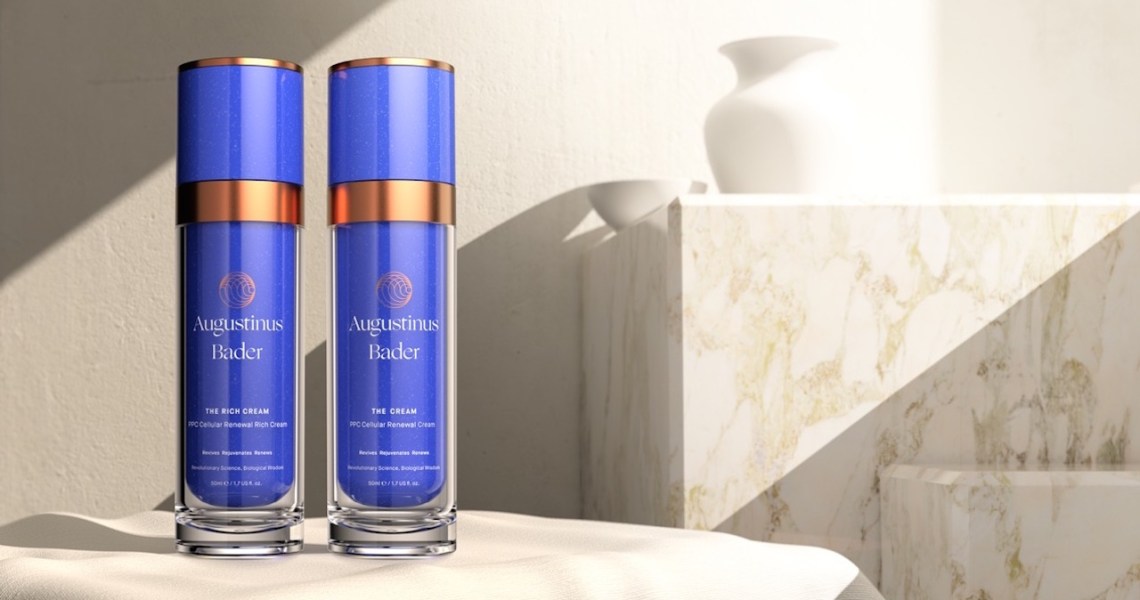Help us learn more about you and your job. Take our short audience survey now for a chance to win a $25 Amazon gift card.
G-beauty is in contention to be the next big beauty trend.
German beauty brands, including skin-care brand Augustinus Bader, Dr. Barbara Sturm, Royal Fern and Dr. Haushka, have found a cult following in the U.S. as of late. Dr. Barbara Sturm, with 204,000 followers on Instagram, opened her first store in the U.S. in May and expanded to Sephora on Tuesday. Augustinus Bader, meanwhile, has gained over 40,000 followers on Instagram since launching in February 2018, and on July 15, it introduced its third product — a body cream — through a exclusive partnership with Violet Grey; it will also expand to additional retailers in September. Even heritage brands like Weleda, which is Swiss-German brand, saw double-digit growth in 2018 after previously experiencing a decline.
German beauty differs from other geography-based trends. While K-beauty and Italian beauty gained traction through promotion by their respective governments, there is not a formalized German government campaign fueling the popularity of these products. Furthermore, K-beauty and J-beauty introduced Americans to multi-step routines, playful elements like sheet masks and colorful packaging, and local ingredients like sake and snail essences. But German beauty, as a whole, is steeped in science-backed formulas and target cellular renewal for an older consumer — in other words, it boasts anti-aging properties. K-beauty, on the other hand, has been a boon to younger customers.
“On the whole, the industry has categorized certain places and formulated a narrative around what they do best. With German skin care, it delivers on results,” said Maureen Choi, beauty director of Violet Grey. “Germans are not trying to reinvent the wheel on what’s flashy, but rather, they’re delivering what they have scientifically engineered [skin care] to do.”
While customers are not specifically asking for German brands at Violet Grey, the sales figures are evident of their popularity. Augustinus Bader sales are up 400% year over year as of June, while Dr. Barbara Sturm saw 40% growth; the retailer has carried Augustinus Bader since April 2018 and Dr. Barbara Sturm since August 2016. Augustinus Bader made $6 million in its first year in 2018 and is expected to make $24 million in 2019, according to WWD. Dr. Barbara Sturm, launched in 2003, has grown 300% every year for the past three years, and the U.S. makes up over 50% of the brand’s sales, according to Sturm.
Ad position: web_incontent_pos1
Internationally, Germany represents Europe’s largest cosmetics market, according to the German government. In 2018, Germany increased its exports of cosmetics and skin care by 21% to $3.8 billion — it currently represents the sixth-largest exporter, behind France, the U.S. and South Korea, according to trade consultancy World’s Top Exports. German brands, while unlikely to be considered “clean” (Dr. Barbara Sturm did not receive a “Clean at Sephora” label, for example), are generally seen as more transparent, said Choi. This is because of their science-backed claims, use of active ingredients throughout their labels and the seemingly un-hyped nature of brands’ respective marketing; for example, Augustinus Bader has yet to launch any large-scale campaign. Customers are also attracted to the fact that brand founders like Dr. Sturm and Dr. Bader are coming from outside the beauty industry. (Dr. Sturm is doctor with a background in orthopedics, while Dr. Bader has worked with burn victims.) Therefore, they have a “fresh perspective and no preconceived notions about what they can’t do,” said Choi.
“We are exiting the era of marketing-based skin care and entering the era of performance-based skin care,” said Sturm. “[I have] an uncomplicated philosophy of less is more, and from that, [I] use only the very best; this approach ripples through my packaging, my skin-care philosophy and the small but clinically potent number of ingredients in my products.”
Mallory Huron, beauty editor with trend forecasting agency Fashion Snoops, disagrees with the idea that the beauty industry is moving away from marketing-based skin care but does believe that G-beauty can help move the market in a direction where manufactured “hype and frivolity” is taken out of the equation. She noted that this is still the beginning stages of the G-beauty trend, since most brands in the space are notably expensive. Augustinus Bader products range from $165 for 170 milliliters of the body cream to $265 for 50 milliliters of its facial products. Dr. Barbara Sturm retails for between $75 and $310 for comparable-sized products.
“We’ll see more brands coming from Germany and the trickle-down effect to drug stores, and more brands utilizing these [ingredient-formulation] technologies, because everyone is looking for the next new thing,” Huron said. “Once we see the tech, aesthetic and the marketing of G-beauty slapped on some mid-range or drug-store products, more people will gain interest.”




